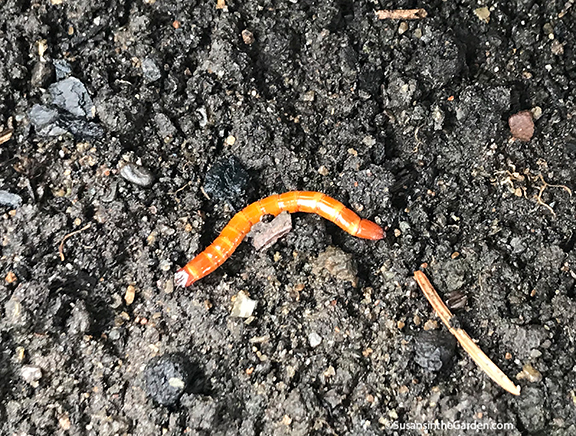Wireworms
Latin name: Limonius spp. (photo coming soon)
Size: 1/3″ to 1 1/2″ long
Color: Brown to golden brown with visible joints
Life cycle: Wireworms are the larvae of click beetles (named for their ability to snap themselves out of harm’s way). They overwinter in the soil.
Symptoms of their activity: Wilting leaves due to the worms chewing on underground roots and stems. Poor seed germination.
Typically seen on: Many types of vegetables and fruits, with root crops, melons and potatoes being some of their favorites.
Controls: Create traps for the wireworms by taking chunks of potatoes, attaching them to wooden picks or skewers, sticking the potato pieces into the ground (the picks/skewers let you know where they are and give you something to pull them up with). The pieces attract the worms. Then they’ll burrow into them to eat. Pull up the traps after a week’s time and discard the potatoes which will, hopefully, contain the worms.
Cultural controls: In the fall, remove vegetable plants that you’ve harvested from so the wireworms won’t have anything to feed on. Avoid planting seeds deeply, or in cold, wet soil.
Natural predators: Nematodes. Researchers are studying viral controls.
Additional information: Missouri Botanical Garden Wireworms, and University of California Management of Wireworms on Cucurbits.
Back to Organic Pest Control

